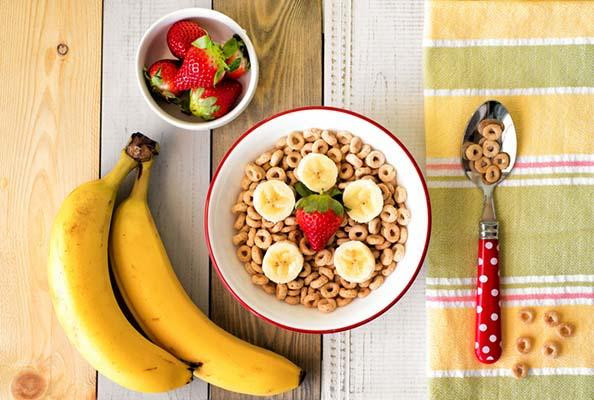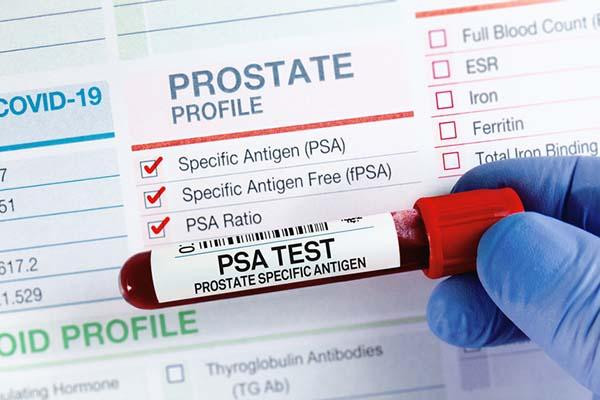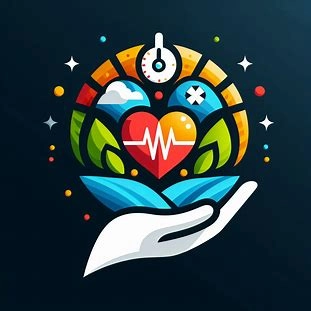News And PoliticsCommunications And EntertainmentSports And FitnessHealth And LifestyleOthersGeneralWorldnewsBusiness And MoneyNigerianewsRelationship And MarriageStories And PoemsArts And EducationScience And TechnologyCelebrityEntertainmentMotivationalsReligion And PrinciplesNewsFood And KitchenHealthPersonal Care And BeautySportsBusinessFamily And HolidaysStoriesIT And Computer ScienceRelationshipsLawLifestyleComedyReligionLifetipsEducationMotivationAgriculturePoliticsAnnouncementUSMLE And MedicalsMoneyEngineeringPoemsSocial SciencesHistoryFoodGive AidBeautyMarriageQuestions And AnswersHobbies And HandiworksVehicles And MobilityTechnologyFamilyPrinciplesNatureQuotesFashionAdvertisementChildrenKitchenGive HelpArtsWomenSpiritualityQuestions AnsweredAnimalsHerbal MedicineSciencePersonal CareFitnessTravelSecurityOpinionMedicineHome RemedyMenReviewsHobbiesGiveawayHolidaysUsmleVehiclesHandiworksHalloweenQ&A
Top Recent
Loading...
dataDp/1032.jpeg
Worldnews

LIVE: Liverpool Vs Atletico Madrid UEFA Champions League
~0.2 mins read
Follow our live build-up, with breaking team news, ahead of our full text commentary stream of the match at Anfield. By Kevin Hand Share Save Follow Al Jazeera English:...
Read this story on Aljazeera
profile/5683FB_IMG_16533107021641748.jpg
News_Naija

Virtual Operator Leverages MTN Network For Service Expansion
~1.1 mins read
Vitel Wireless, a mobile virtual network operator in Nigeria, has announced the successful completion of its network integration with MTN Nigeria, setting the stage for the launch of its telecom services across the country. In a statement on Thursday by the Chief Operating Officer, Chudi Nwabueze, Vitel Wireless said the integration with MTN’s extensive network infrastructure would allow it to deliver high-quality voice, data, and value-added services to customers nationwide. “This partnership marks a significant milestone in our journey to provide innovative and affordable telecommunications services to Nigerians,” Nwabueze stated. He added, “With MTN’s nationwide coverage, we are now positioned to offer reliable connectivity and competitive mobile packages to diverse customer segments across all 36 states and the Federal Capital Territory.” Nwabueze said Vitel Wireless is at the forefront of shaping Nigeria’s emerging MVNO landscape following the Nigerian Communications Commission’s licensing of 46 operators. He noted that Vitel has already achieved several industry firsts, including being the first MVNO to secure a numbering plan and national and international routing codes and to achieve interconnection with Airtel, Glo, and 9mobile. Significantly, Vitel Wireless is also the first MVNO in Nigeria to integrate with a major mobile network operator, MTN, as a roaming partner, a development Nwabueze described as a game-changer for affordable telecom access. He added, “We are excited to officially launch our services through this strategic partnership. Our mission is to contribute meaningfully to Nigeria’s digital transformation by delivering accessible, customer-focused mobile solutions.”
Read more stories like this on punchng.com
profile/5170OIG3.jpeg.webp
Healthwatch

Is Your Breakfast Cereal Healthy?
~4.0 mins read
A new study examines the nutritional value of popular breakfast cereals — maybe the one you're eating right now.

Cheerios
Frosted Flakes
Honey Nut Cheerios
Honey Bunches of Oats
Cinnamon Toast Crunch
Froot Loops
Lucky Charms.
whole grain as the first ingredient
at least 2.5 grams of fiber per serving, though at least 5 grams per serving is even better
minimal or no added sugar or sodium
150 calories or less per serving — and measure that serving, which is often 3/4 to 1 cup (far less than the average bowl holds!)
a short ingredient list with items you recognize as food (rather than things like butylated hydroxytoluene or food dyes).

I have a confession: I like cereal. And not just a little.
When I was a kid, I’d have ready-to-eat breakfast cereal in the morning and again after dinner as dessert. Raisin Bran, Corn Flakes, and Rice Krispies were in regular rotation. And if there was milk left over after finishing the cereal, I’d do what so many other cereal lovers do: add more cereal until the milk and cereal disappear together. Cereal is still on my short list of favorite foods.
I’m not alone in this. In the US, more than a quarter of children and adolescents devour ready-to-eat cereal for breakfast most days of the week. Among adults, around half eat cereal at least once or twice a week. Beloved athletes often appear on cereal boxes and a number of celebrities have proclaimed their love for the stuff, including Jerry Seinfeld and Justin Timberlake.
Part of the appeal is advertising touting cereal as a healthy choice. A 2025 study of more than 600 breakfast cereals disputes this, particularly for many cereal all-stars.
How healthy are breakfast cereals?
Not so much. Many — perhaps, most — of the biggest names in the cereal world have a lot of sugar, minimal protein before adding milk, a bunch of additives, and not much else. Some don’t even have much fiber, a feature that is supposed to make breakfast cereal a healthy choice.
And, you know the 120 to 150 calorie count often listed on the side of the box? Turns out that the actual portions many people consume (including me) can easily soar past 300 calories at a time.
And what about eye-catching boasts like “heart healthy,” “high in vitamins,” “all natural,” or “part of a healthy breakfast"? Unfortunately, researchers have found little connection between health claims and overall nutritional content. In fact, for many cereals, the bulk of the nutritional value relies on something that’s not even in the box: milk.
A closer look at seven popular breakfast cereals
Here are the seven top-selling breakfast cereals in the US:
Most are sweet, highly processed, and have lots of empty calories. Some add vitamins, though usually in small amounts, while others sprinkle in sodium (salt) you don’t need. Playing up potentially healthy features such as fiber content while ignoring high sugar and calories is common. And cutting out artificial colors and flavoring won’t transform these cereals into healthy or nutrient-dense foods.
But breakfast cereals are getting healthier, right?
A study published in May 2025 found just the opposite. It looked at the nutritional value of 1,200 ready-to-eat cereals marketed to children that were new or reformulated between 2010 and 2023 and noted a clear trend in the wrong direction: increasing amounts of fat, sodium, and sugar along with decreasing protein and fiber.
Fortunately, there are efforts underway to improve the types of cereals kids eat: USDA guidelines for school breakfast programs this year aim to gradually reduce the amount of sugar and salt and increase the amount of whole grains required.
So, what’s a breakfast eater to do?
When it comes to breakfast choices, surely we can do better than sugar-packed, high-calorie, low-nutrient cereals that are hyped by marketers (especially to kids) and sell so well.
One option, of course, is to switch to healthier breakfast foods like oatmeal with a sprinkle of fruit and nuts, eggs, yogurt with fruit, or peanut butter on whole grain toast.
But if you’re as stuck on ready-to-eat breakfast cereal as I am, check the nutrition label for these healthy aspects:
Examples of cereals that fulfill most of these include Shredded Wheat, Kashi Go Lean, Cheerios, and All-Bran.
The bottom line
If you like ready-to-eat breakfast cereal, it’s not the worst thing out there, especially when served with skim or non-dairy milks that are high in protein or have been fortified with it. But be selective and careful about portion control. A healthy breakfast helps fuel your body and should be more than sweet, crunchy junk food masquerading as a nutritious meal.
profile/5170OIG3.jpeg.webp
Healthwatch

What Are The Symptoms Of Prostate Cancer?
~4.3 mins read
They can be easily confused with those of other more common conditions.

Voiding symptoms caused by obstruction at the bladder outlet: they include a weak or intermittent stream and incomplete emptying
Storage symptoms caused by an overactive and sensitive bladder: these symptoms include a sudden urge to urinate, or needing to urinate more often during the day and night.

Screening with the prostate-specific antigen (PSA) test can detect early-stage prostate cancer while it’s still asymptomatic. But some men are diagnosed with prostate cancer only after symptoms appear. For insights into how doctors distinguish prostate cancer from other noncancerous problems affecting the prostate, we spoke with Dr. Marc B. Garnick, the Gorman Brothers Professor of Medicine at Harvard Medical School and Beth Israel Deaconess Medical Center, and editor in chief of the Harvard Medical School Guide to Prostate Diseases.
What are the first symptoms a man might notice if he has early-stage prostate cancer?
I first want to mention that most men who are diagnosed with prostate cancer — including many with advanced forms of the disease — do not present with symptoms. When symptoms do appear in a man with early-stage disease, they affect his ability to urinate. Lower urinary tract symptoms (LUTS), as we call them, include urinary frequency, urgency, difficulty starting or stopping a stream, getting up repeatedly at night to pee, or feeling like you’re never able to fully empty your bladder. LUTS can develop if a tumor grows large enough to physically obstruct the urethra, which is the tube that carries urine out of the body. The diseased prostate can also push up against the bladder, thereby lessening its capacity to hold fluid.
But more often than not, urinary symptoms result from other problems with the prostate. Benign prostatic hyperplasia (BPH), for instance, is a natural enlargement of the prostate that affects most men as they get older. Some men develop LUTS if the prostate and surrounding tissues become inflamed; this is called prostatitis. And if a man experiences burning sensations while urinating, then he likely has a problem with his bladder, not his prostate. Men who experience any of these urinary symptoms should be evaluated by a doctor.
How would a doctor begin to narrow down the diagnosis?
Assuming prostatitis and bladder disease have been ruled out, the next step is to differentiate between prostate cancer and BPH. Men with BPH typically have two kinds of urinary symptoms.
A red flag for prostate cancer would be having storage symptoms only, or urinary symptoms that develop very rapidly. That would be unusual for LUTS caused by BPH. These symptoms can be assessed by having men fill out a questionnaire called American Urological Association Symptom Score.
The doctor can also do a digital rectal examination (DRE). If the prostate feels symmetrically enlarged — meaning the gland is bigger but in a uniform and evenly distributed way — then that helps to establish a BPH diagnosis. If there’s asymmetry in the gland, or if the doctor feels a hard nodule, then the patient needs to be referred to a urologist for further evaluation. DREs are performed less often now than they used to be, and many doctors have no training in the procedure. That’s unfortunate, since in my view a DRE is one of the most important components of a physical examination.
Another thing people need to recognize is that BPH can eventually lead to kidney failure, or to a medical emergency called acute urinary retention, which is a sudden inability to urinate at all. So, BPH should really be treated to avoid these serious complications.
Can PSA help doctors differentiate between BPH and prostate cancer?
It can. PSA levels rise in men with BPH as they also do in men prostate cancer, simply because a larger, more irritated prostate gland releases more PSA into blood than a normal prostate does. Usually, we start patients on BPH drugs that can make it easier to urinate while also lowering PSA. Then after six weeks or so, we test the PSA again. If the levels come back high, then the next step is typically a magnetic resonance imaging (MRI) scan of the prostate. If the MRI is normal and the PSA is proportionate to the size of the prostate, then that helps to rule out cancer. In such cases, we can consider avoiding a prostate biopsy — at least temporarily — and continue to monitor PSA instead.
What are the symptoms of more advanced prostate cancer that’s begun to metastasize or spread?
Even with advanced prostate cancer, many patients are still completely asymptomatic. Fortunately, we’ve gotten much better at treating advanced disease, especially now that we have better scans to identify small deposits of cancer and methods to eliminate them. When symptoms do appear, especially if the cancer has spread to the bones, men typically show up with back or shoulder pain — basically pain where metastases grow near bone surfaces where nerves are located. Men who present with persistent back pain that’s getting worse despite treatment interventions should be considered for further evaluations such as x-ray or MRI.
What about fatigue and weight loss?
These sorts of symptoms are more common in other cancers such as colon cancer, lung cancer, and lymphoma. You typically don’t see them in prostate cancer unless the cancer is very advanced with widespread metastases.
Thanks for walking us through this complex topic.
You’re welcome! The challenge for patients and physicians alike is to identify the causes of overlapping urinary symptoms, which are so common among men with either prostate cancer or BPH. Hopefully this discussion was helpful.
Loading...
 Worldnews
Worldnews
 News_Naija
News_Naija
 Healthwatch
Healthwatch